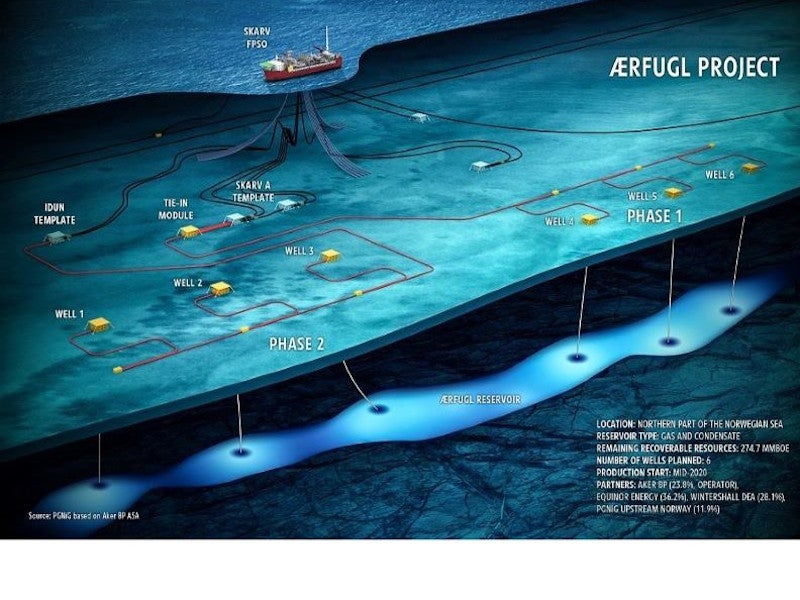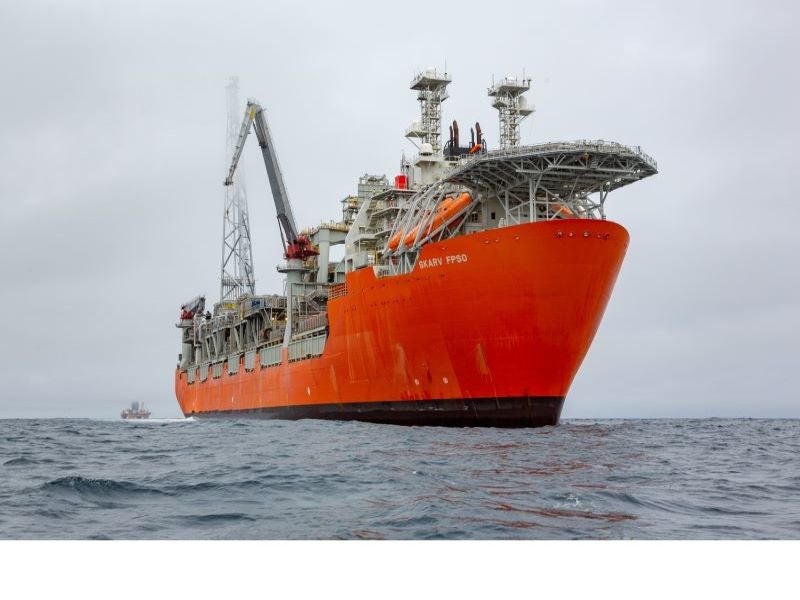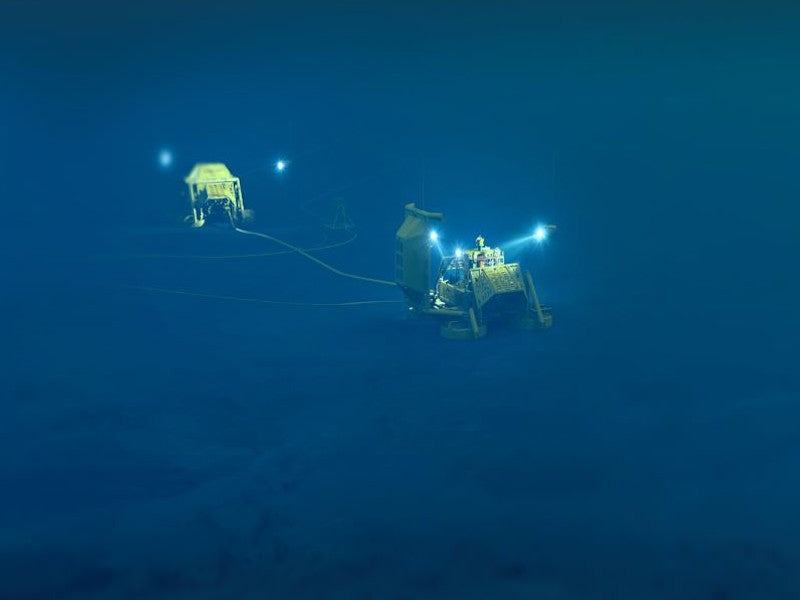The Aerfugl (Ærfugl) field is an offshore gas and condensate field in the Norwegian Sea, Norway that commenced initial production in April 2020. It is being developed as a subsea field tied back to the Skarv floating production, storage, and offloading (FPSO) facility.
Aker BP, the operator, holds a 23.835% stake in the Skarv Unit while the other partners are Equinor (36.165%), Wintershall DEA (28.0825%), and PGNiG (11.9175%).
The test production well (A-1H) that started operations in 2013 provided information about the reservoir leading to the development of the Aerfugl field.
The plan for the production and development of the field in two phases was approved by the Norwegian authorities in April 2018. The project partners reached a final investment decision for Aerfugl phase two in November 2019.
The overall investment in the field development is estimated to be approximately £684m (NOK 8bn).
Location, discovery, and reservoir details
Discovered in 2000, the Aerfugl field is located in the northern part of the Norwegian Sea, approximately 200km west of Sandnessjøen, Norway. It is situated to the west of the Skarv field in water depths ranging from 350m to 450m.
The gas and condensate reservoir of the Aerfugl field comprises the Cretaceous sandstone of the Lysing Formation. The depth of the reservoir is approximately 2,800m.
The Aerfugl reservoir is approximately 60km-long and up to 3km-wide. The recoverable hydrocarbon reserves of the field are estimated to be approximately 300 million barrels of oil equivalent (Mboe).
Ærfugl field development plan
The Aerfugl field is being developed in two phases with a total of six production wells tied back to the Skarv FPSO.
Phase one involves three production wells and associated subsea development in the southern part of the Aerfugl field. The production in phase one is expected by the end of 2020. Aker BP received consent from the Norwegian authorities to start production from phase one in October 2020.
Phase two involves three production wells and associated subsea development in the northern part of the field. The production from phase two started with the commissioning of one production well in April 2020. The remaining two wells are expected to come online in 2021.
The subsea production systems are connected to the Skarv FPSO by pipe-in-pipe electrically heated flowlines.
Skarv FPSO details
Operated by Aker BP, the Skarv FPSO has a gas processing capacity of approximately 670 million cubic feet a day (mcfd) and an oil production capacity of approximately 85,000 barrels per day (bpd). The storage capacity of the FPSO is approximately 875,000 barrels.
The Skarv FPSO is 295m-long and 51m-wide, and it consists of 15 mooring lines and 13 risers. It is situated approximately 210km west of Sandnessjøen in the Norwegian Sea.
The gas is exported from Skarv FPSO by an 80km-long pipeline to the Asgard Transport System, which transports gas from the Asgard field to the Karsto terminal in Norway, while the oil stored in the FPSO is transported by the shuttle tankers.
The Aerfugl field development extends the lifetime of the Skarv FPSO by five years.
Contracts awarded
Subsea 7 was awarded an engineering, procurement, construction, and installation (EPCI) contract to lay a 21km-long electrically heat-traced flowline (EHTF) pipe-in-pipe for the Aerfugl phase one gas field development in December 2017.
Separately, Subsea 7 was awarded an EPCI contract to lay a 13.5km-long EHTF pipe-in-pipe for Aerfugl phase two in December 2019.
The EHTF system was fabricated at Subsea 7’s spoolbase at Vigra, Norway. Subsea 7 manufactures the electrically heat-traced flowlines in collaboration with ITP InterPipe.
Aker Solutions received a contract to supply the subsea production system for Aerfugl phase one 1 in December 2017. The scope of the contract included wellheads, vertical subsea trees, a tie-in module, and an umbilical riser base.
Separately, Aker Solutions bagged a contract worth approximately £58m (NOK 700m) to supply a subsea production system for Aerfugl phase two in December 2019. The scope of the contract included wellheads, vertical subsea trees, satellite structures, control systems, a tie-in module, and umbilicals.
Odfjell Drilling was contracted to drill up to six production wells for the Aerfugl field development. Deepsea Stavanger, a semi-submersible drilling rig, was deployed to drill the wells.





